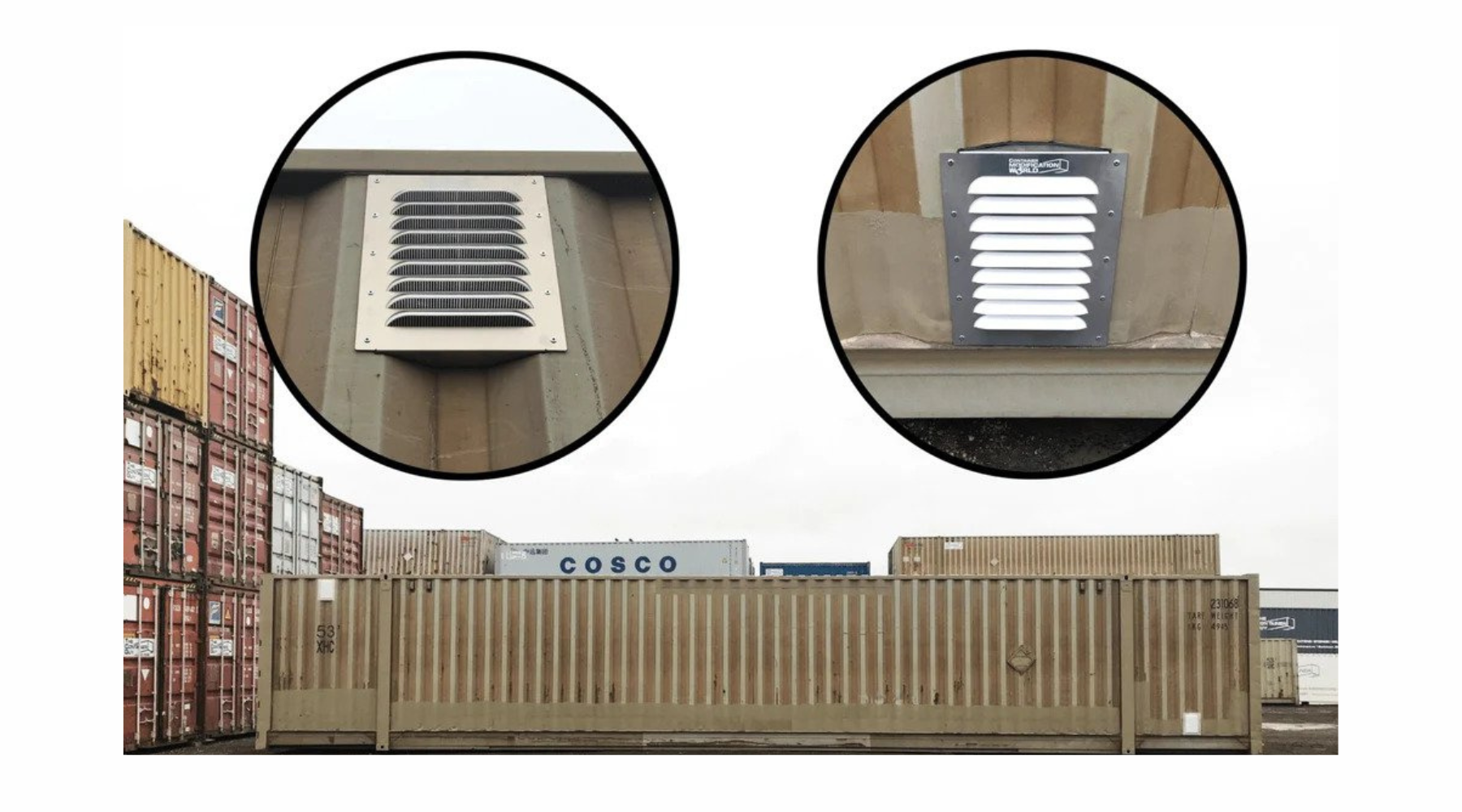Shipping containers are known for being the most secure, rodent-proof, and wind and watertight construction, making them the best option for storage and transportation. But for the same reasons why they are the best structures--they protect from bad weather and temperature changes--are also the reason why condensation and heat build up.
Depending on what items you’re storing in a container, having proper ventilation can help protect them from things the container cannot. Knowing what kind of vent(s) you need for your sea can is the first step, and I will go through the different options that are out there.
But first, let me explain why ventilation is important.
Why is ventilation important?
ISO containers are built with 2 or 4 pressure vents that allow the can to breathe and pressurize through the changing temperatures. These vents are designed small enough so water cannot enter the container. But, because the vents are dime-sized, there is not a proper exchange of airflow.
Without that exchange, condensation can build up within the container, causing mould and mildew to grow. Heat can also collect within a container, making the workspace unusable, causing hazardous materials to explode, or damaging susceptible products. And, if you are from a hot climate, bugs are a huge issue if there are no preventative measures used to keep them out. (Note: Many vents come with bug screens, so keep that in mind while shopping for a ventilation system).
Passive ventilation and mechanical ventilation
Passive ventilation
Passive ventilation is the natural process of airflow in and out of the container through fixed openings using the natural pressure of the atmosphere. The products available in passive ventilation are ISO container vents, louvered vents, gable vents, mesh, screen, etc. Passive vents are a great solution to ventilate dry boxes (non-insulated) in all climates to keep the temperature down and reduce the risk of condensation.
Mechanical ventilation
As the name suggests, mechanical vents use mechanical or electrical systems to force the flow of air within a container. The products available in mechanical ventilation are exhaust fans, electrical dampers/louvers, and solar-powered vents.
The best option for you
Depending on what you are storing, and when and where you are storing it, you need the right kind of ventilation.
Arctic and subpolar climates
Arctic and subpolar climates have a higher risk of condensation, so ensuring your container has constant airflow is a must. Without proper ventilation, mildew and mould can build up within the container, damaging your products inside.
Passive ventilation in cold climates works great for airflow in a container, but if you are concerned about moisture buildup and need a more consistent and reliable airflow, mechanical ventilation may be your best option.
Note: Certain items, such as furniture, blankets, wood, and porous items have higher rates of moisture, which can get into the atmosphere and create condensation.
Temperate and desert climates
Condensation and heat buildup are the main concerns when using a shipping container in temperate and desert climates. Whether you’re storing items in a container or living in it, ventilation is extremely important to reduce heat and humidity. Vents keep the airflow moving, helping reduce heat so the container does not get extremely hot. They also reduce humidity in the air, preventing condensation from building up when the temperature changes.
For storing items, passive vents are great to use to help with airflow, but it is uncontrolled. If you have items that need consistent airflow or temperatures, or if you will use the container as a home or office, you will need mechanical ventilation. There are mechanical vents that allow you to control the humidity and temperature levels within the container, and there are also solar-powered options.
Solar-powered vents are a great option for desert climates because it exhausts heat during the day when the sun is out--the source of the heat--and keeps the container cool. Solar-powered vents are mechanical but they only work during the day, so installing passive vents for airflow at night is highly recommended.
Note: Hot climates are prone to bugs, so adding a bug screen to your ventilation is a must to keep them out of your container.
Hazardous materials (HAZMAT)
When storing items, be aware of which products are hazardous or not. Hazardous materials need to be stored with proper ventilation or they may cause explosions, fire, corrosion, or toxic fumes.
For example, if you are planning on storing vented gas tank items, such as ATVs or garden tractors, you will need ventilation to air out fuel fumes. If you don’t, the risk of an explosion or health concerns when occupying the container increases.
Ventilation for HAZMAT
When storing HAZMAT items, the best ventilation solution for you is to passively ventilate the container with both high and low vents. You want both high and low ventilation to minimize the risk of gases collecting on the floor or ceiling. Some gases are heavier than air, while others are lighter, so having both is recommended to air out both.
There are mechanical ventilation options for HAZMAT, but it needs to have explosion-proof electrical. Explosion-proof electrical is extremely costly, so speak with a container modification professional to see if you will need it for your project before creating your order.
Conclusion
Ventilation is one of the most important modifications you can add to your sea can, and no matter where you live, you’ll need it. ISO containers are the safest and most secure storage solution for your products, but you still need to protect against situations it cannot. So when you are ordering your modified container or speaking with one of our sales representatives, make sure to ask them about our ventilation options.



